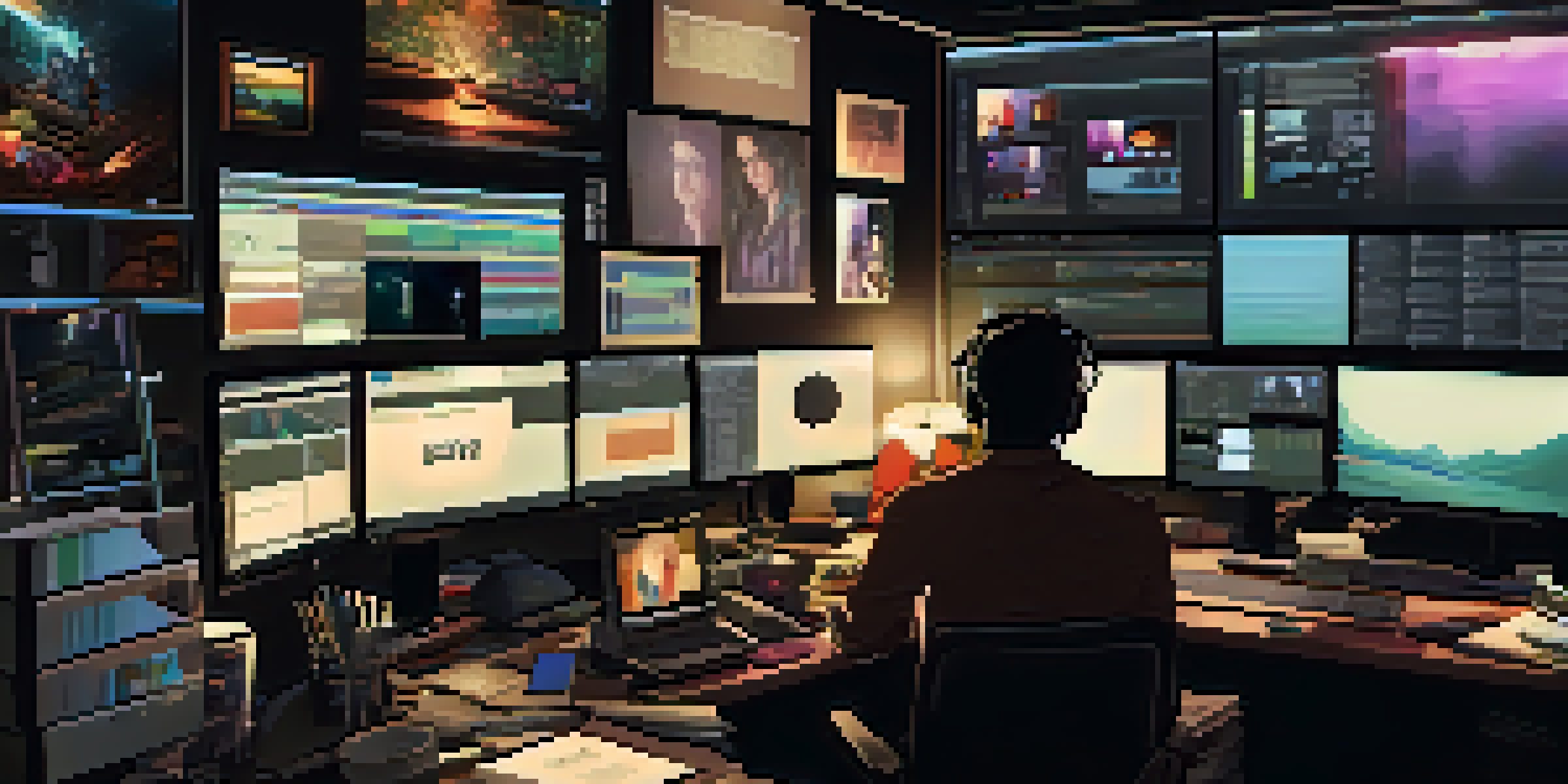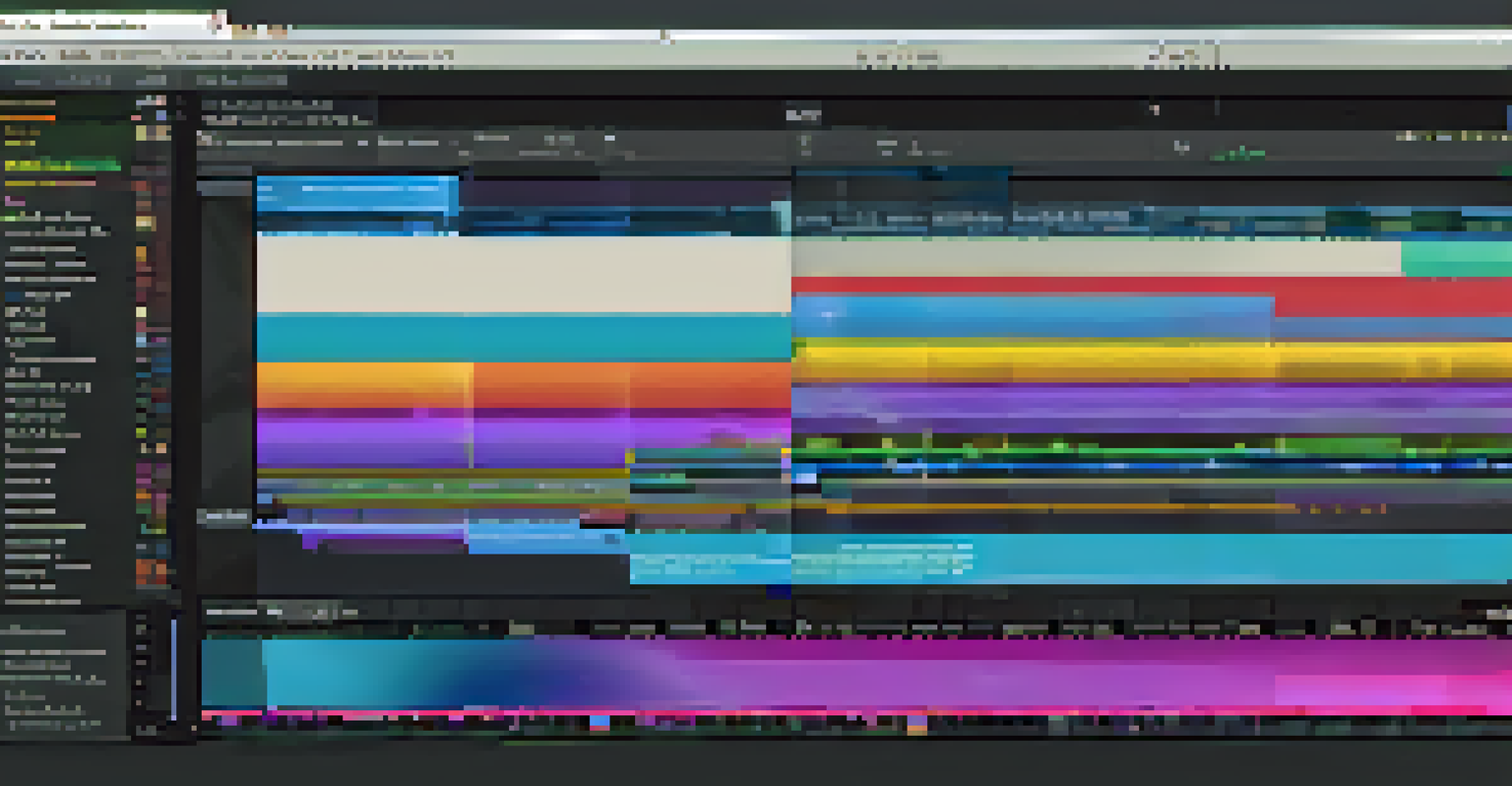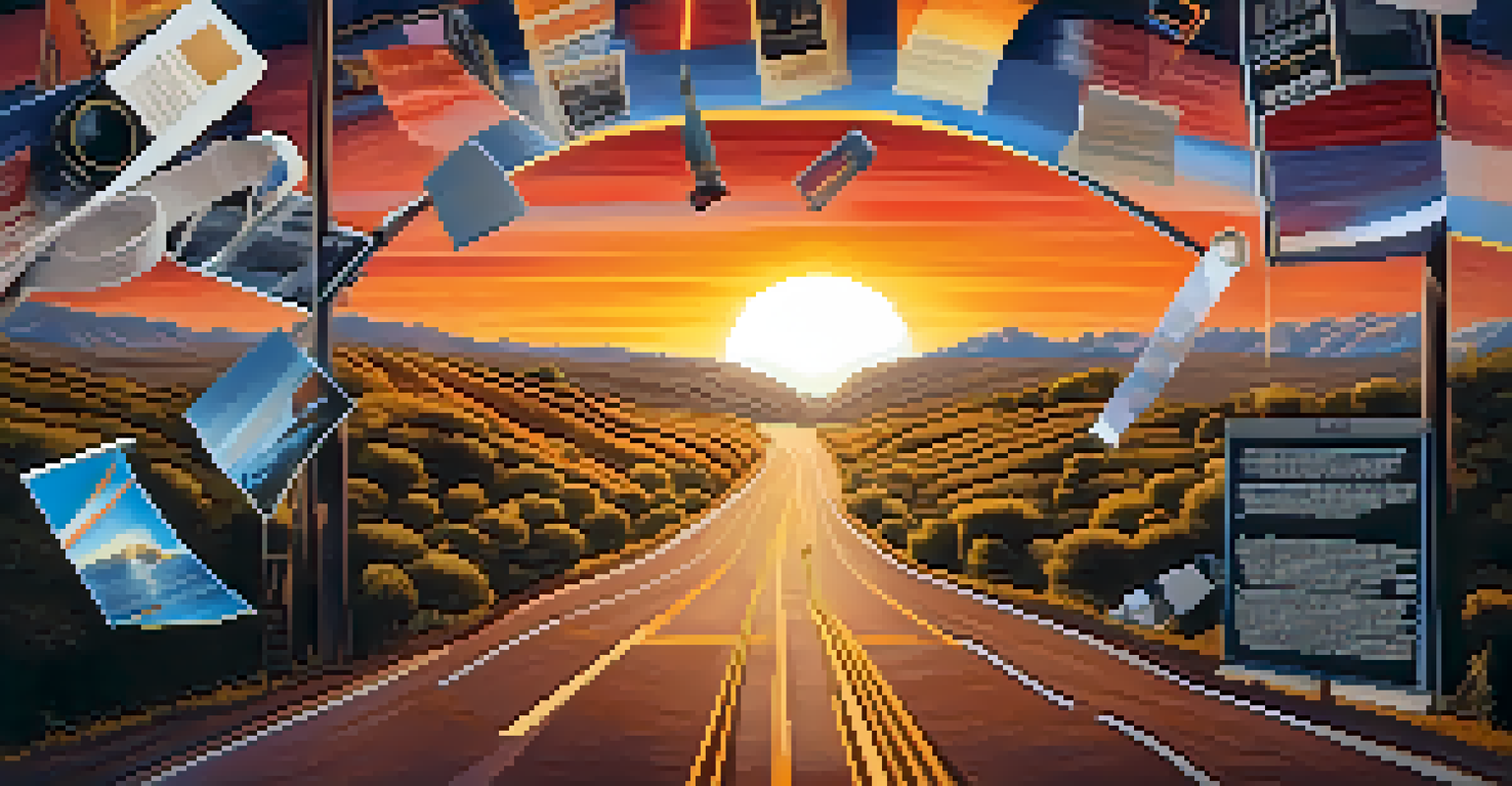Film Editors and the Importance of Narrative Coherence

Understanding the Role of Film Editors
Film editors are the unsung heroes of cinema, working behind the scenes to shape a film's narrative. They take countless hours of raw footage and weave them into a cohesive story that resonates with audiences. This role requires not just technical skill but also a deep understanding of storytelling principles.
Editing is not just a technical job; it's a creative process that requires a deep understanding of storytelling.
Imagine a puzzle where each piece represents a scene; the editor is the one who finds the right fit to create a complete picture. Their job goes beyond cutting and splicing; it's about pacing, rhythm, and emotional impact. They collaborate closely with directors to ensure the vision of the film is realized on screen.
In essence, film editors transform disjointed clips into a seamless narrative, guiding viewers through the story's emotional highs and lows. Their expertise can make the difference between a film that feels disjointed and one that captivates its audience from start to finish.
The Art of Narrative Coherence
Narrative coherence refers to the clarity and logical flow of a story, allowing audiences to understand and engage with the plot. A coherent narrative guides viewers through the film without confusion, making it easier for them to connect with characters and themes. Film editors play a crucial role in achieving this coherence through their meticulous work.

Consider how a well-edited film maintains a clear timeline, ensuring events unfold in a way that makes sense. Editors use techniques like flashbacks and montages strategically to enhance the story without losing clarity. This careful manipulation of time and space keeps viewers anchored in the narrative.
Film Editors: The Storytellers
Film editors shape narratives by transforming raw footage into cohesive stories that resonate with audiences.
When a film lacks narrative coherence, audiences may feel lost or disengaged, leading to a less enjoyable experience. Therefore, editors must balance creativity with structure, crafting a story that is both compelling and easy to follow.
Techniques Used by Film Editors
Film editors employ a variety of techniques to ensure narrative coherence, including cuts, transitions, and pacing adjustments. For instance, a jump cut can create urgency or highlight a character's emotional state, while a fade can signify the passage of time. These techniques help convey the story's tone and enhance the viewer's emotional connection.
The editor is the first audience. If it doesn't work for them, it won't work for anyone.
Additionally, editors often use sound design and music to reinforce narrative elements. Music can cue emotional responses, while sound effects add realism to scenes. By integrating these elements seamlessly, editors create a richer viewing experience that supports the narrative.
The choice of shots and angles also plays a significant role in storytelling. Editors select the best takes to convey the intended message, ensuring that the audience is engaged and invested in the outcome. Each decision made during editing contributes to the overall coherence of the film.
Collaboration with Directors and Writers
The relationship between film editors, directors, and writers is vital for creating a coherent narrative. Editors work closely with directors to understand their vision and make choices that align with the intended tone and themes of the film. This collaboration often involves discussions about pacing, emotional beats, and character arcs.
Writers also play a crucial role, as the script serves as the foundation for the editor's work. A well-structured script provides the roadmap for the editor, making it easier to create a coherent narrative. Editors must interpret the script and bring it to life visually, often making creative decisions that enhance the original story.
Importance of Narrative Coherence
A coherent narrative allows viewers to engage with the film, making it essential for editors to maintain clarity and flow.
This teamwork creates a dynamic environment where ideas can flourish, resulting in a more polished and cohesive film. The synergy between editors, directors, and writers is essential to achieving narrative coherence and ensuring the final product resonates with audiences.
The Impact of Editing on Audience Engagement
Effective editing significantly impacts how audiences engage with a film. A well-paced edit can maintain tension and excitement, keeping viewers on the edge of their seats. When an editor understands the emotional beats of a story, they can enhance those moments, creating a deeper connection with the audience.
On the contrary, poor editing can lead to confusion and disengagement. If scenes are cut too abruptly or lack context, viewers may struggle to follow the story. This disruption can break the immersion, causing audiences to lose interest and detracting from the overall experience.
Ultimately, editors have the power to shape how audiences perceive and react to a film. By prioritizing narrative coherence, they ensure that viewers remain invested in the characters and plot, elevating the overall impact of the cinematic experience.
Challenges Faced by Film Editors
Film editors often face numerous challenges in their work, particularly when it comes to maintaining narrative coherence. One common issue is dealing with excessive footage, where editors must sift through hours of material to select the best scenes. This process can be overwhelming, making it crucial for editors to stay focused on the story's core elements.
Another challenge is managing the expectations of directors and producers. Sometimes, creative differences may arise, leading to conflicts about how a film should be edited. Editors must navigate these situations diplomatically while ensuring the final product aligns with the intended vision.
Collaboration Enhances Editing Quality
The dynamic relationship between editors, directors, and writers is crucial for crafting a polished and cohesive film experience.
Additionally, time constraints can put pressure on editors, requiring them to work quickly without sacrificing quality. The ability to think critically and make swift decisions is essential in these situations, as editors strive to deliver a coherent narrative under tight deadlines.
The Future of Film Editing and Narrative Coherence
As technology continues to evolve, the future of film editing is likely to bring new tools and techniques that can enhance narrative coherence. Digital editing software has already transformed the industry, allowing editors to manipulate footage with greater precision and creativity. This advancement opens up exciting possibilities for storytelling in film.
Moreover, the rise of streaming platforms has changed how films are consumed, leading to an increased demand for high-quality content. Editors play a crucial role in ensuring that films meet these standards, balancing artistic vision with audience expectations. This shift may also influence editing styles, as editors adapt to the preferences of diverse audiences.

As we look ahead, the importance of narrative coherence in film editing will remain paramount. Regardless of advancements in technology, the core goal of editors will always be to create engaging, coherent narratives that resonate with viewers, ensuring that the art of storytelling continues to thrive.